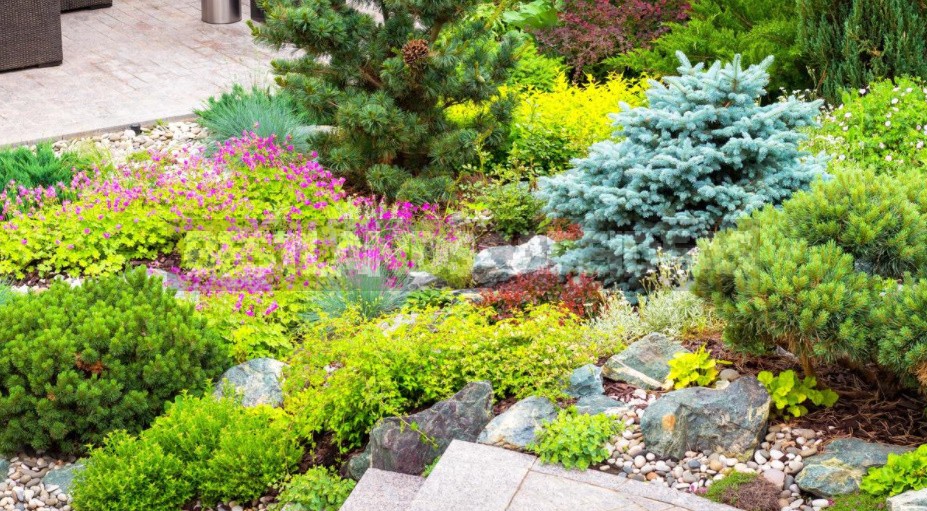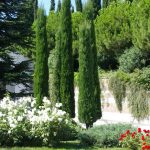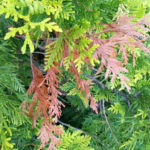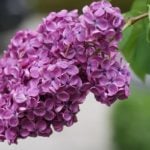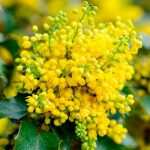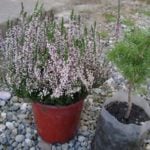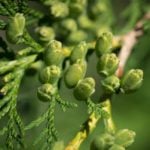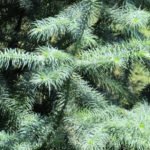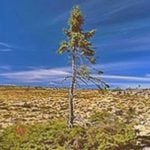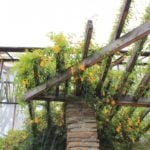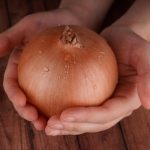Coniferous plants in the design of the site play one of the most important roles — they are involved in the creation of the main structure, a kind of skeleton of the garden. Drawing a parallel with interior design, you can compare a coniferous tree with a wardrobe that occupies a permanent and solid place in the room. And if the shortest and dwarfed representatives in winter hide secretly under the snow cover, then their tall brothers are on guard of the beauty of the garden all year round.
Today, there are so many varieties that to create an interesting multi-level evergreen composition, you can collect a variety of shapes-from classic columns, pyramids and balls to weeping, stamp and creeping. And new cultivars appear every year!
Everyone knows that when planting, it is important to take into account the size of an adult tree or shrub. Usually they are guided by the height and diameter of the plant at the age of 10 years. By the way, the height of different species differ very significantly. In order not to make a mistake with the choice, it is important to understand what a particular species and variety is.
High
These coniferous plants grow up to 10 m and above, some species reach 30-40 m. They are often used in urban landscaping. These are Picea pungens, Picea mariana, Picea abies, Picea obovata, Picea glauca, Larix sibirica, Larix laricina, Juniperus virginiana, Abies koreana, Abies nordmanniana, Abies concolor, Pinus cembra, Pinus sibirica. Many of these species have low varieties that are worth paying attention to.

In suburban areas, tall species are also planted, but there are some nuances. First, such coniferous trees should be placed away from the main buildings, as they strongly shade buildings, their powerful roots can damage the foundation, and fallen needles perfectly retain moisture in the soil, which is good for the tree itself, but not so harmless for buildings. Also, when placing them, you need to take into account fire safety standards.
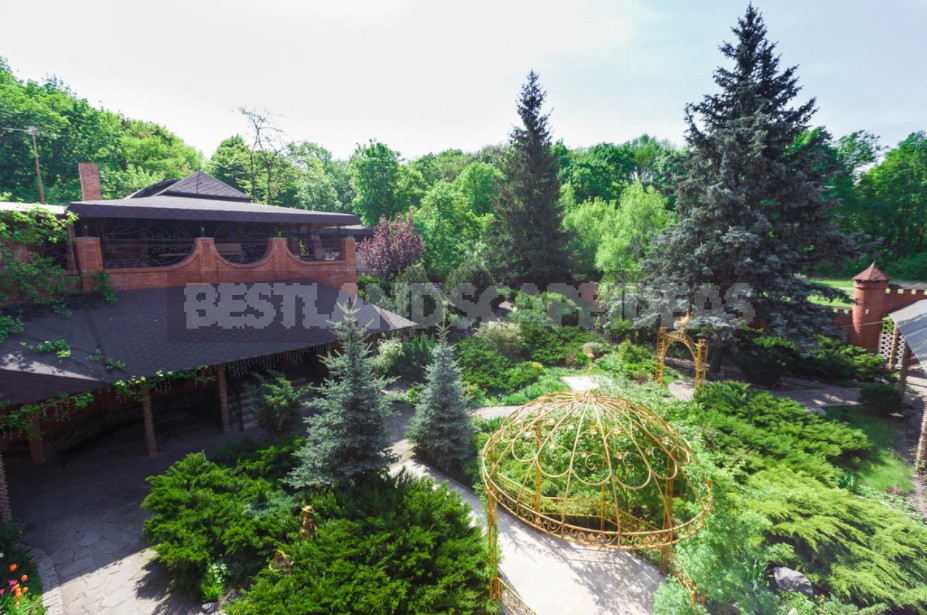
Secondly, you should immediately correctly determine the place of planting the tree, taking into account its further growth and dimensions. Such specimens are best planted near the border of the plot, while — so that they do not obscure the buildings of neighbors in the future. If the plot is small, it is better to abandon coniferous giants and consider the types and varieties of medium size, because there are so many of them.
Medium-sized
This is the most popular group of coniferous plants, its representatives grow up to 5-6 m — what you need for small suburban areas. They can be planted in mixed borders, to use as a tapeworm on the lawn, or planted in avenues and hedges. Examples include the varieties Picea pungens ‘Edith’,’Baby Blueeyes’, ‘Białobok’, ‘Lucky Strike’, ‘Maigold’, ‘Zuckerhut’.
Form a live fence or alley
For creating alleys, conifers with a pyramidal crown shape are more suitable: varieties Thuja occidentalis, Juniperus scopulorum. They are usually planted after 3-4 m, creating a solemn green corridor.
Excellent green hedges will turn out from unpretentious slightly disheveled, at first glance, thuja ‘Brabant’. But after several haircuts, which are recommended to be carried out 2-3 times a season, its needles become a dense, impenetrable wall. In a hedge, plants are planted after 1-1. 3 m.
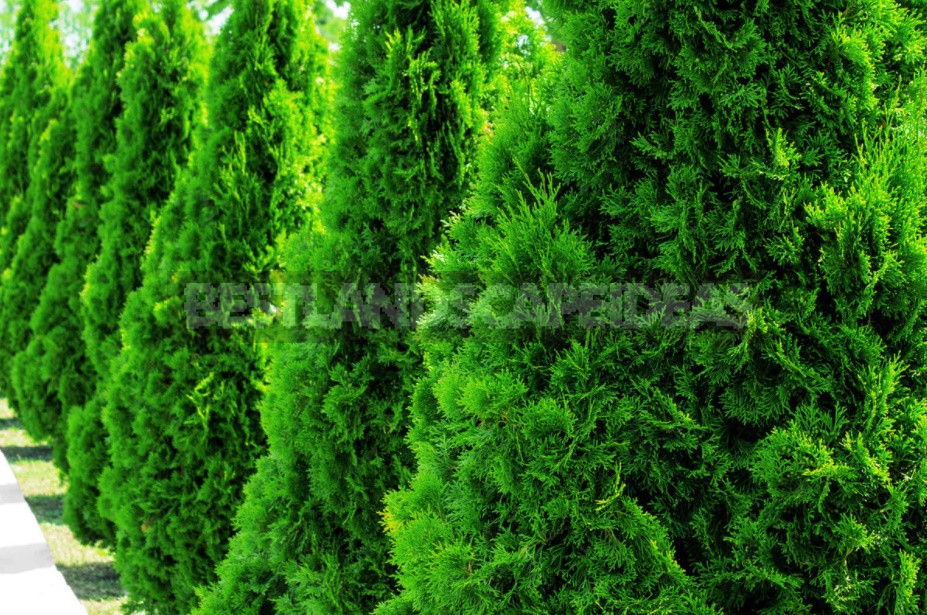
A luxurious green fence can also be formed from fir trees. But to get a well-closed wall, you need regular care and formation. Formative cutting of fir trees is usually done in June-July, using a sharpened pruner. The tops are cut off, the fence is cut in the form of a cube or an inverted trapezoid. This is a time-consuming process, but the green wall really turns out to be impenetrable and performs protective and aesthetic functions.
Create a background
Conifers create the most advantageous background for decorative shrubs with spectacular inflorescences and unusual foliage-hydrangeas, Physocarpus (‘Diabolo’, etc.), viburnum, hawthorns, birches, dogwoods, Cornus (‘Elegantissima’, etc.), scumpias with maroon and yellow foliage.
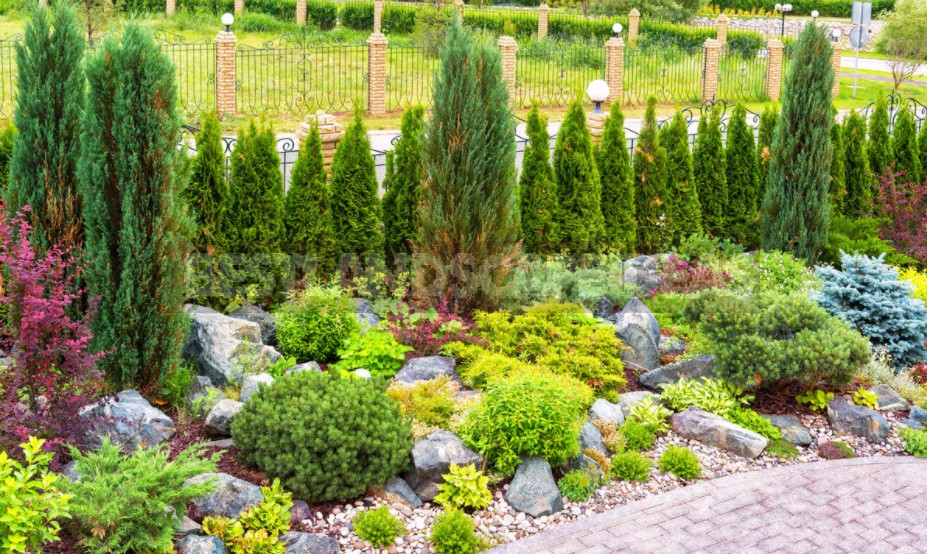
They surprise you with their shape and color
If you want all the attention to be focused on the composition, add plants with colored needles (with yellow — in thuja ‘Yellow Ribbon’, blue — in Juniperus scopulorum ‘Blue Arrow’, silver — in Abies concolor ‘Glauca Compacta’).
In the battle for attention with colorful conifers can compete stamp (Larix decidua ‘Kornik’ , Larix kaempferi ‘Blue Dwarf’, Pinus strobus ‘Tiny Kurls’) and weeping forms. They are good in multi-level groups, and trees with drooping branches (Larix kaempferi ‘Stiff Weeper’, Larix decidua ‘Puli’ and ‘Repens‘, Pinus strobus’ Pendula’) are very effective in a single planting on the lawn.
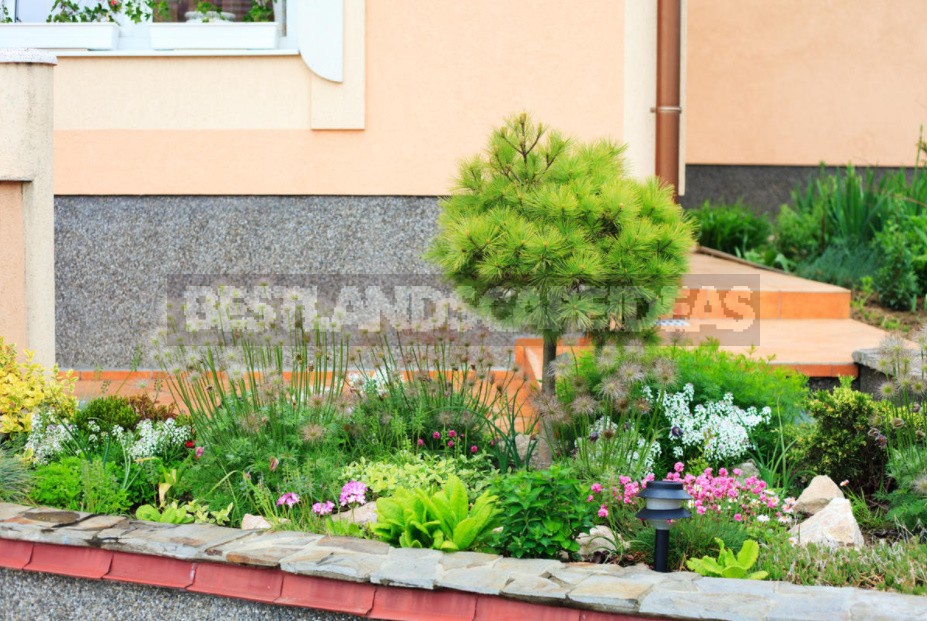
Christmas tree in the garden
Medium-sized firs, firs or pines can be planted as a New Year’s tree in the garden — and decorate it with toys and garlands. Most often, they prefer varieties with a low growth rate, so that the Christmas tree is in the center of the celebration as long as possible and it was convenient to dress up.
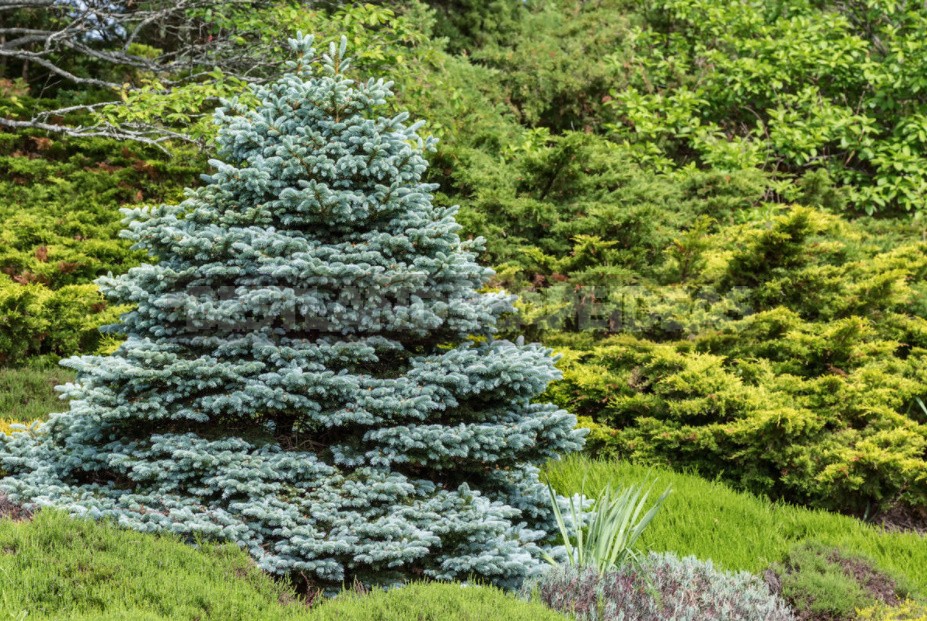
Undersized
Undersized and dwarf forms abound among coniferous plants, and among them there are various forms: creeping sprawling shrubs and crumbs similar to prickly pads (Juniperus media ‘Pfitzeriana Compacta’, Abies balsamea ‘Nana’, Abies koreana ‘Green Carpet’, Pinus mugo ‘Peterlee’, Thuja occidentalis ‘Golden Tuffet’), as well as evergreen “balls” (Thuja occidentalis ‘Hoseri’, ‘Danica Aurea’, ‘Teddy’, Picea abies ‘Pumila’, Picea omorika ‘Karel’, etc.).
Low conifers are real station wagons. Only with their participation, you can make a harmonious coniferous garden, a rocky hill or a rockery, and they should also be added to the mixborder of long-term decorativeness. Some varieties are ideal for forming low borders along paths, along the border of flower beds, etc.
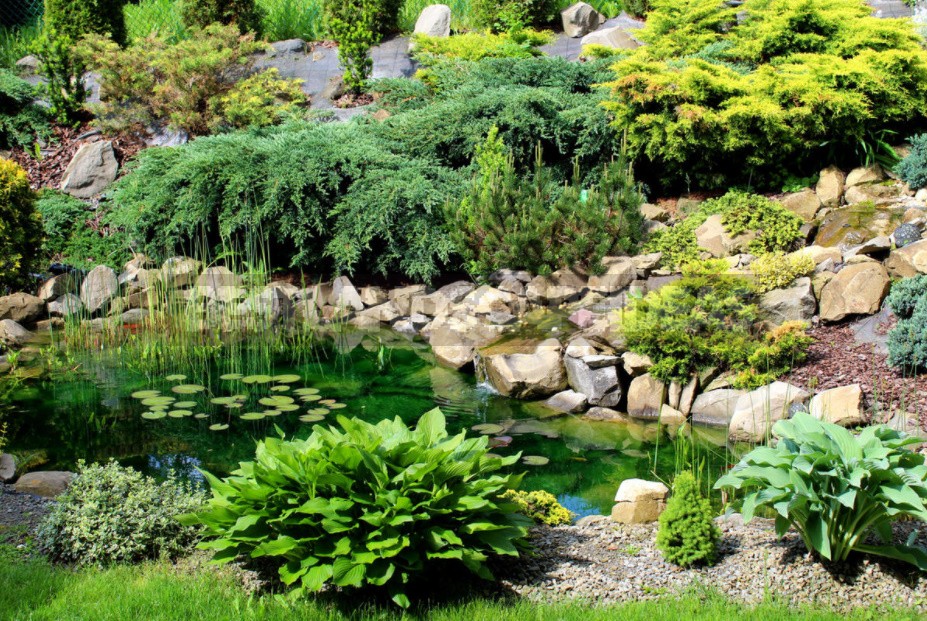
Some important tips
1. Firs, firs and thuja are more fond of shady places and moist soil, and junipers, cypresses and pines-on the contrary, sunny corners of the garden and light soils.
2. Plants with colored needles (yellow, blue, variegated) feel better in a well-lit area. In the shade, their decorative qualities are reduced to a minimum, and they tend to return to their natural color — and become green.
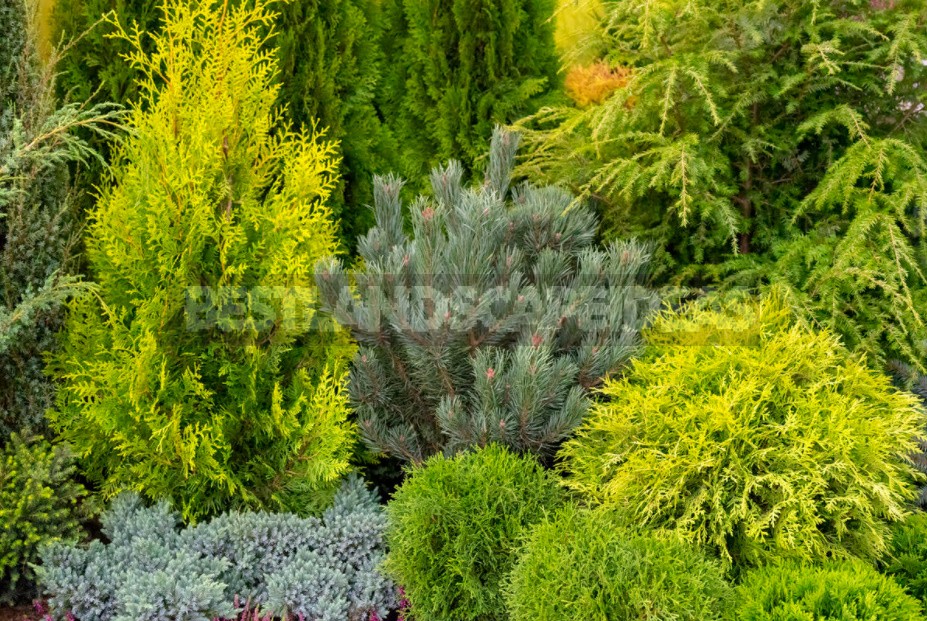
3.The entire future life of the plant depends on the correct planting — remember that all conifers do not tolerate the deepening of the root neck.
4. Green and prickly will be very grateful to you if in the fall, at the end of October-beginning of November, you shed them well. This will help the plants survive the winter safely.
